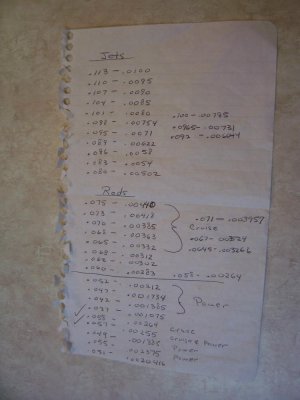My otherwise stock 440 has a 1412 Edelbrock 800 on it that I picked up used years ago. It's a little ragged in off idle transtition so I bought a kit to put in it. I suspect that a rebuild and setting all the adjustments to spec will greatly resolve this but I also want to see what is inside it right now in terms of jets and metering rods in case it was tampered with before I picked it up.
Does anyone know what Edelbrock originally installed in these carbs?
Also, based on a stock 440 (cam, heads, pistons, exhaust, etc) has anyone found any metering rod or jet changes that it responds well too?
Thanks
Does anyone know what Edelbrock originally installed in these carbs?
Also, based on a stock 440 (cam, heads, pistons, exhaust, etc) has anyone found any metering rod or jet changes that it responds well too?
Thanks

















